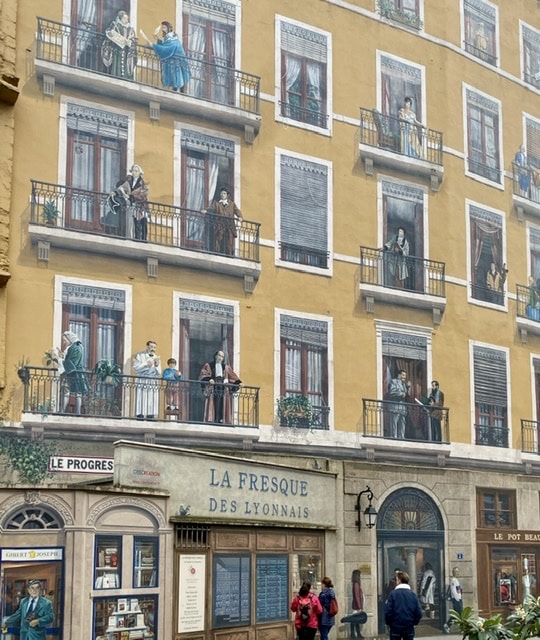Yesterday we visited both Vienne and Lyon. Vienne is a city some 32 kilometers south of Lyon known for its importance in the food industry and for its Roman ruins. It was an important Roman town, becoming a Roman colony established by Julius Caesar in 47 BC. As capital of the powerful region of Burgundy until the 9th century it continued to be very influential until it became a part of France in 1490. We toured the town in the morning before setting sail for Lyon.






It doesn’t really bend—just the only way my iPhone can get it all into the picture.
As we approached Lyon, something kept bothering me. You may have things in your memory that you can’t quite recall—just a little feeling that “something here is important but I can’t remember.” My friend, Jerry Culton, wrote that it was funny we should be in Lyon when the town was just mentioned in his Ollie Church History class. That was the key—imagine the sound of rusty doors opening and partially revealing something still in the fog. Christian persecution—Irenaeus? Just couldn’t remember how it was all connected to Lyon.




Thank goodness for the internet to help me fill in the details from my church history class fifty years ago. Christianity came to Lyon in the second century AD when it was a very prosperous Roman city. In those days, the Romans were suspicious of the Christians with their strange rites—baptizing people and eating the flesh of their God. In 177 AD, the Lyonnaise began a significant attack against the Christians. Eusebius in his church history says that the towns people raged against the Christians, even Christians who were their neighbors that they had known all their lives. They brought them before an assembly of the town and had them confess that they were Christians and then martyred 48 of them.





Irenaeus was an official in the church at Lyon, but was away in Rome at the time and fortunately not a victim of the oppression. Later, Irenaeus became significant in the fight against Gnosticism that was present in the Christian church during that time. He made use of simple logical arguments and satire to point out how Gnostic teachings were inconsistent with significant Christian doctrine, and his point of view won the day as Gnosticism was eventually declared heretical. Many thanks to Jerry for encouraging me to re-educate myself. I hope many of you reading this blog don’t have such severe memory lapses.
Today, Lyon is a town filled with Christian churches. As our guide said, “You have a church almost on every block.” Most significant is the town’s veneration of Mary as seen by the gold statue of Mary next to the basilica overlooking the city and protecting it.

Lyon is the third largest city in France, with a population in the city of 500 thousand and in the metro area of 1.2 million. It is known for his rich history, many Roman ruins, silk industry, narrow passageways known as traboules, and its many mural frescoes painted on the side of its buildings.









Charles, I’ve enjoyed following your postings during your trip. Katy and I visited many of the same spots you have during one of our trips there 5 years ago. We’ve especially enjoyed your explanations of your photos and some of the history involved.
Reinhard S., Denver